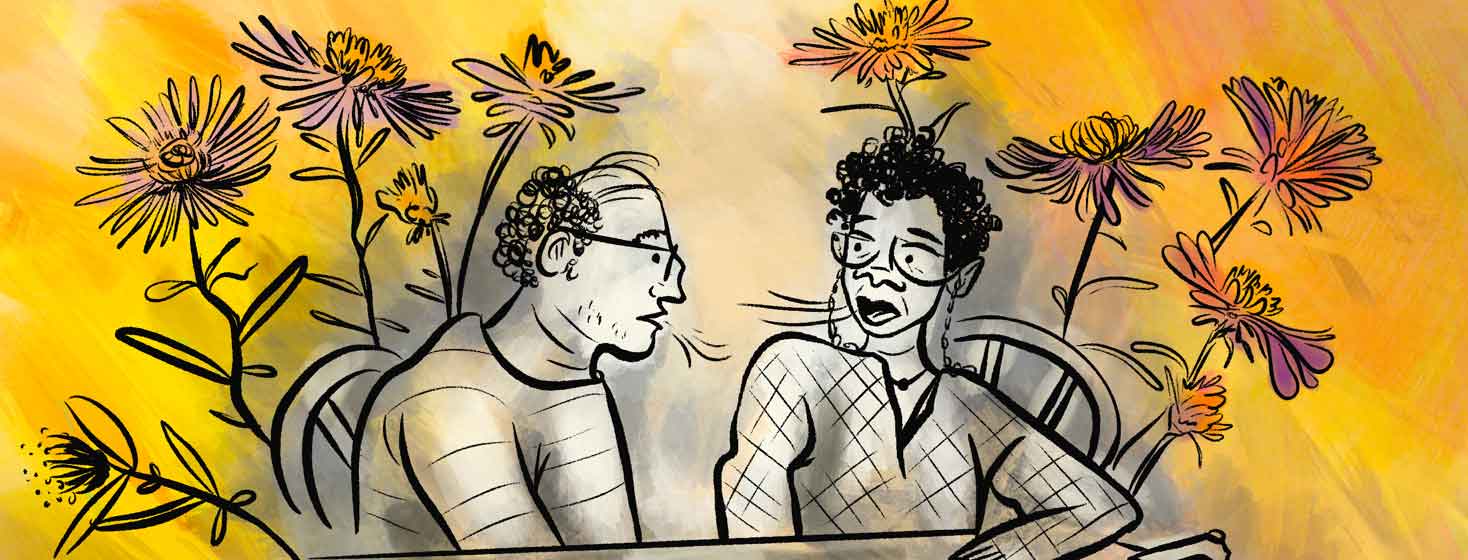Understanding is Love: My New Mantra
“Understanding is love’s other name. If you don’t understand you can’t love.” -Thich Nhat Hanh
If you met me and told me about a problem you are having in your life, chances are I’ll pull my iPhone out and quickly begin researching ways to help you overcome that challenge. No matter what the problem may be, that’s my go-to way to feel like I’m helping someone. This only has strengthened with the birth of my two kids and the near-constant tumbles on the sidewalk or runny noses. I think we’re all a bit like this. When we see someone in peril, we want to be a helper.
But there are two problems with this immediate reaction
First, the person we need to help may not need help, and second, without understanding what that person is going through, we may not act in a way that’s truly helpful. (And if anything, we can end up doing more harm than good.) This came up recently as Keegan, my husband with AS, and I are going through marriage counseling. So much of our discussions lately center around the idea of me backing away from being the one to do everything.
When I moderate or talk to others about being a caregiver for Keegan, I get the same response. “Wow, you are such an amazing and kind person.” While I’m flattered by this compliment, I struggle to hear it. I never feel like I’m doing enough as a caregiver. (Why didn’t I just do the dishes for him last night when that bad thunderstorm came in? I should have put the kids down for bed so he could rest. The internal monologue is endless...)
When I read the quote at the beginning by Thich Nhat Hanh last week, I had to pause. I realized that diving deep with Keegan is how I’ve shown him love in this moment. I’ve been there to understand AS and his manifestation of AS every step of the way. I know Keegan appreciates me folding the laundry or taking care of the kids, but I realized I’ve done what many friends and family struggle to do: understand.
So what does understanding look like?
First, it’s recognizing any baggage we bring to the conversation with someone else. I could be frustrated that Keegan didn’t do the dishes one night and ask him why he didn’t do it out of that frustration. But that isn’t really the right mindset to bring to understanding.
Understanding requires an openness and willingness to simply listen (and not take things too personally). For me, it shows up as looking Keegan in the eyes and simply saying, “Tell me what’s going on.” There’s a Buddhist story that grounds me before listening to what Keegan is going through to find out how I can help (or if listening is just enough). I’ll leave you with the story below. When I remind myself that understanding is the core of showing love for Keegan and his AS, then I know I’m enough for him.
Nan-in, a Japanese master during the Meiji era, received a university professor who came to inquire about Zen.Nan-in served tea. He poured his visitor’s cup full, and then kept on pouring. The professor watched the overflow until he no longer could restrain himself. “It is overfull. No more will go in!”“Like this cup,” Nan-in said, “You are full of your own opinions and speculations. How can I show you Zen unless you first empty your cup?”

Join the conversation